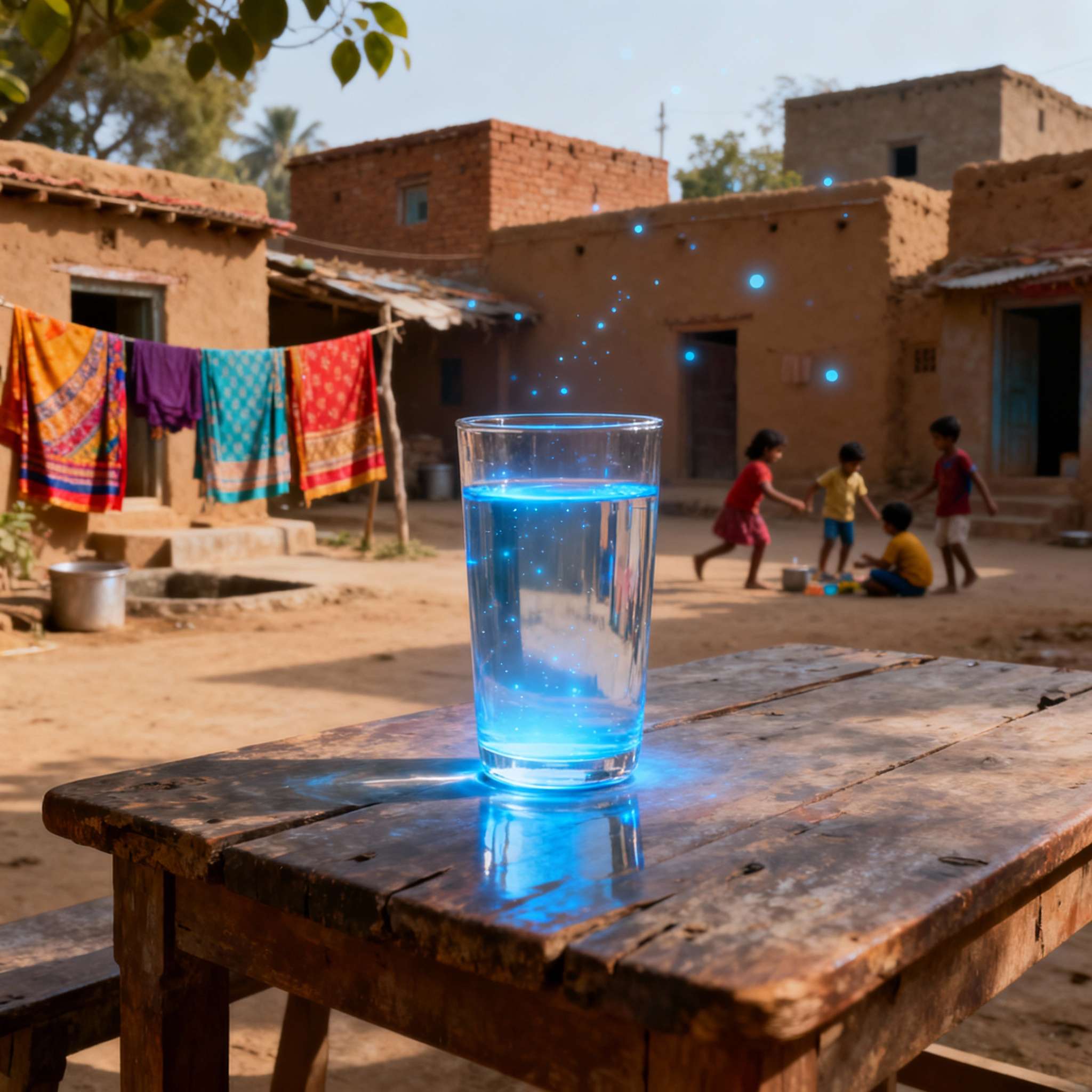For decades, millions of people across India have lived with the danger of fluoride in their drinking water. The consequences are severe: dental fluorosis that stains teeth, skeletal fluorosis that cripples bones, and developmental problems that harm children’s growth. In districts like Bankura and Purulia in West Bengal, safe drinking water has long been a luxury.
In a significant advancement toward providing clean and safe drinking water in rural areas affected by fluoride contamination, researchers at the Indian Institute of Technology (IIT) Kharagpur have developed an innovative and scalable solution. By synthesizing aluminium-substituted hydroxyapatite (Al-HAp) on commercially available wood charcoal, a team led by Dr. Biswajit Bera with assistance from Dr. Sayak Saha Chowdhury, under the supervision of Prof. (Dr.) Sirshendu De, has created a high-capacity fluoride adsorbent with immense potential for real-world applications.
This groundbreaking work represents a fusion of advanced material science with practical engineering, leading to a sustainable, low-cost, and highly efficient water purification solution, particularly relevant for regions plagued by fluoride-contaminated groundwater. This study was also published in Chemical Engineering Journal in 2023.
The science behind the technology
The core innovation of this research lies in the in-situ synthesis of Al-HAp on granular wood charcoal, resulting in a composite material that exhibits exceptional fluoride adsorption performance. The charcoal used in this study was carefully chosen with a granular size of 0.5–3.0 mm, suitable for packed-bed column filters that is an essential feature for scalability and practical deployment in rural filtration units.
Al-HAp is a modification of the naturally occurring mineral hydroxyapatite, known for its strong affinity to fluoride ions due to its ion-exchange capacity and structural compatibility. During its synthesis process, 30% of calcium is substituted by aluminium increasing its fluoride removal capacity significantly. To make the material practical for rural filters, the researchers synthesised Al-HAp directly on granular wood charcoal. The result is a robust composite where Al-HAp crystals form both inside the pore channels and on the surface of the carbon particles. This design increases the contact surface area for fluoride capture while giving the adsorbent strong mechanical strength.
Characterization studies showed the composite has a surface area of 442 m²/g and a point of zero charge (pHZPC) of 5. These properties make it particularly effective in slightly acidic to neutral water conditions commonly found in contaminated groundwater.
Unprecedented fluoride adsorption capacity
The new material has set a benchmark for fluoride adsorption. Under controlled conditions, it achieved a maximum uptake capacity of 105 mg/g, the highest reported so far for any granular adsorbent. This achievement is significant because most adsorbents with high fluoride uptake are in powder form, which are impractical for continuous water treatment applications. The use of a granular medium, compatible with column filtration systems, bridges the gap between laboratory success and field-scale feasibility.
The adsorbent also demonstrated resilience. Tests across varying pH, temperature and competing ions showed that its fluoride selectivity remained high. Importantly, it could be regenerated using sodium hydroxide and reused for at least five adsorption-desorption cycles without significant loss in performance.
Modelling from column studies to community filters
To simulate real-world use, the researchers conducted continuous column experiments. Variables such as bed height, flow rate and inlet fluoride concentration were systematically tested. At a 30 cm bed height, with a flow rate of 10 litres per day and an initial fluoride concentration of 3 mg/L, the system achieved a maximum of 1415 bed volumes before breakthrough.
These results confirmed the scalability of the technology. Unlike many lab-scale experiments that remain theoretical, this research moved swiftly towards practical implementation.
Impact in rural West Bengal
In 2022, thirty six community-scale fluoride removal units were installed across villages in Bankura and Purulia. Each unit has a treatment capacity of 2000 litres per hour, serving thousands of people in areas long affected by fluorosis.
Smaller systems, each supplying 500 litres per day, were placed in Bakshituli Primary School and Mithila Primary School. These units provide safe water not only to students and staff but also to villagers in the surrounding communities.
Together, the installations now supply fluoride-free water to an estimated 40,000 people every day, based on an average consumption of ten litres per person (refer Fig. 1 for the filter images). The systems have operated continuously for more than a year without failure, consistently delivering water within World Health Organization (WHO) and Bureau of Indian Standards (BIS) limits.
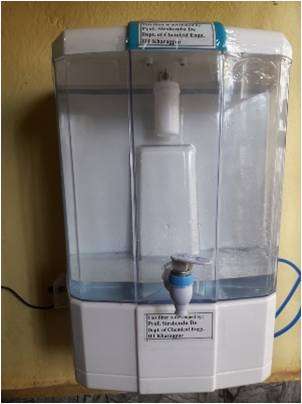
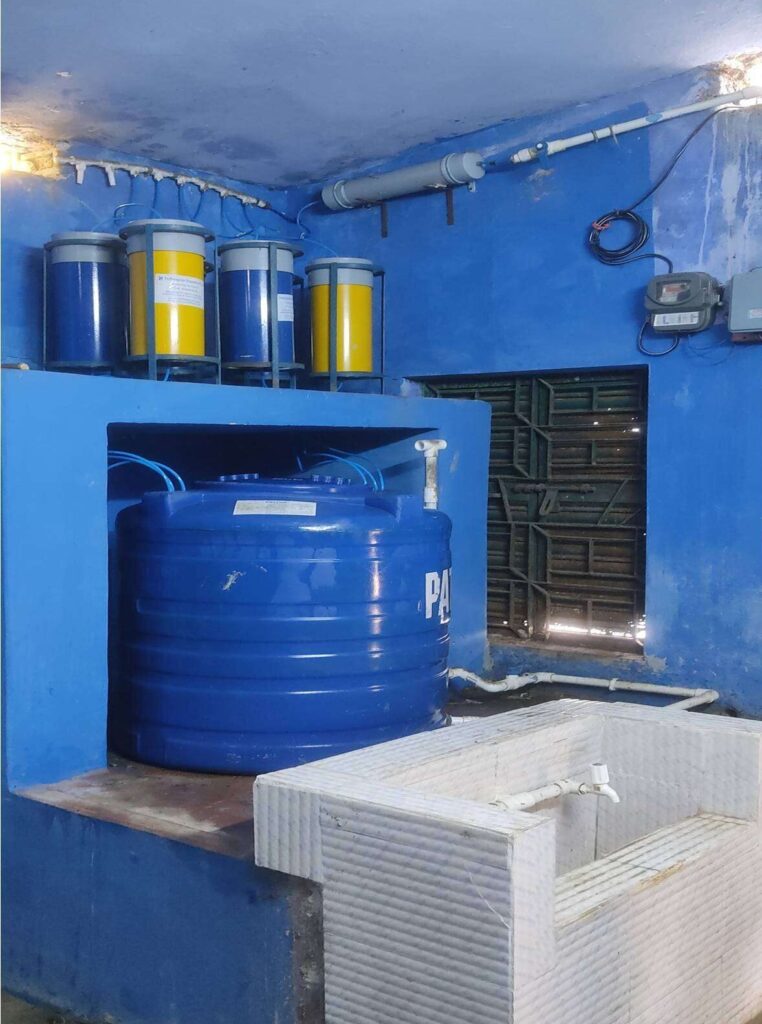
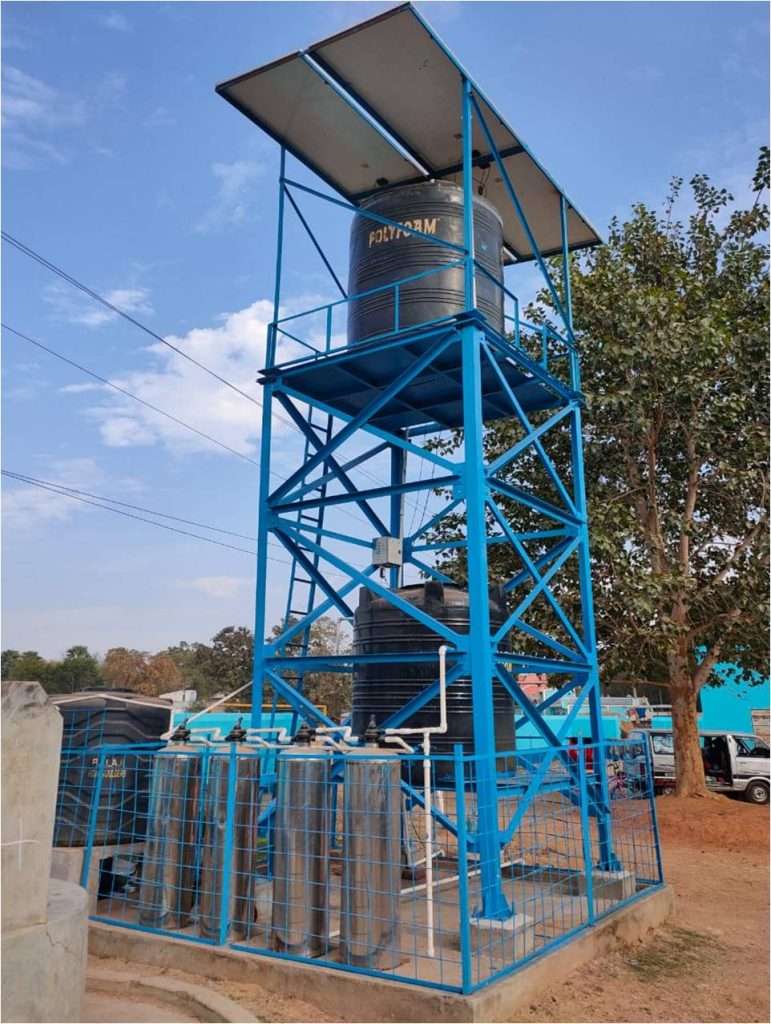
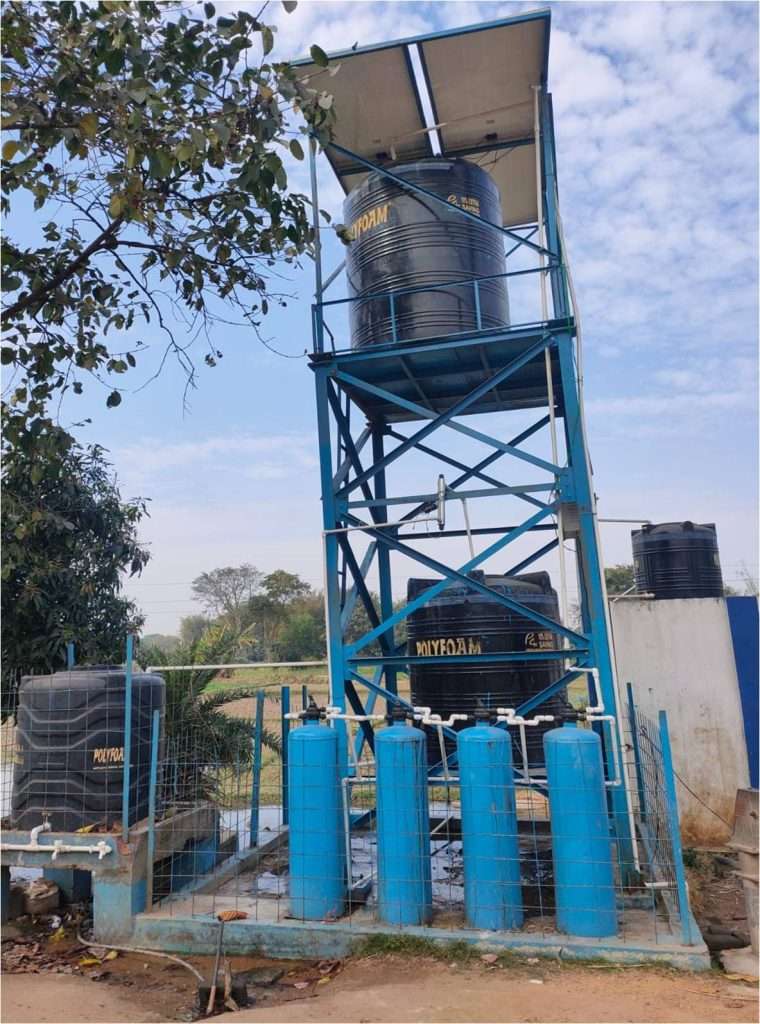
Recognition and future potential
The technology has been filed for patent under Application Number 202231011025. It has also been endorsed by the Fluoride Task Force of the Government of West Bengal, a sign of its potential for wider adoption.
While the immediate focus is on tackling fluoride, the principles behind Al-HAp-coated charcoal could be extended to other groundwater contaminants. As the demand for safe water grows in India and beyond, innovations like this may define the next generation of rural water treatment systems.
Conclusion
This study marks a turning point in the quest for clean groundwater, particularly in fluoride-affected regions. By integrating advanced materials like aluminium-substituted hydroxyapatite with an abundantly available and low-cost wood charcoal, the IIT Kharagpur team has created a powerful, practical, and scalable solution for fluoride removal.
For villagers who once had no choice but to consume contaminated groundwater, the difference is life-changing. Children can drink water without fear of fluorosis, schools can rely on safe supplies, and families can live with one less burden.
As the technology moves toward broader adoption, its success could pave the way for addressing other groundwater contaminants, ushering in a new era of accessible and sustainable water purification for all. It is not just a scientific breakthrough, but a promise of a more sustainable and healthier future.
Reference
Bera, S. Saha Chowdhury, V.R. Sonawane, S. De, High capacity aluminium substituted hydroxyapatite incorporated granular wood charcoal (Al-HApC) for fluoride removal from aqueous medium: Batch and column study, Chem. Eng. J. 466 (2023) 143264. https://doi.org/10.1016/j.cej.2023.143264

